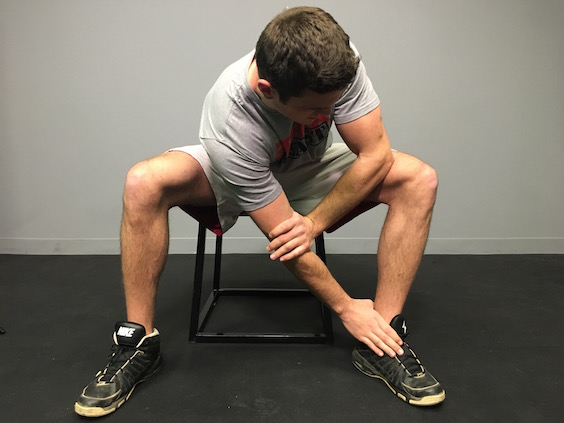Does Walking With a Weighted Vest Help You Lose Weight?
The first time I saw it, I wrote it off as an anomaly. But then I saw it again. And again. And again. Totally normal people walking around in public in totally normal clothes, save for one accessory—a large weighted vest strapped to their torso.
I witnessed such a scene countless times over the summer, and perhaps you’ve seen it in your own neighborhood.
After digging into this phenomenon, I found the common motivation for walking with a weighted vest is an improvement in body composition. By walking around with extra weight strapped to your body, you can theoretically burn more calories and decrease body fat faster than you would by walking without one.
Do Weighted Vests Really Work?
But is it really worth the effort? Does walking with a weighed vest actually help you lose weight?
A 2013 study from the American Council on Exercise examined how the use of weighted vests impacted calorie expenditure while walking. Participants walked at a set pace of 2.5 miles per hour on a treadmill at four different gradients: 0% incline, 5% incline, 10% incline, and 15% incline. They did so under three conditions: wearing no vest, wearing a vest equal to 10% of their body weight, and wearing a vest equal to 15% of their own body weight.
Here were the mean effects of the different loads:

Ultimately, the extra calorie-burning impact of a weighted vest wasn’t all that impressive.
Do Weighted Vests Make a Difference?
Did it make a difference? Absolutely. But by itself, adding a weighted vest to your daily or semi-daily walk probably won’t be enough to have a significant impact on your body composition.
For example, on average, participants burned 5.7 calories a minute while walking without any weighted vest. When wearing a weighted vest equal to 15% their own body weight (which would mean a 30-pound vest for a 200-pound person), they burned an average of 6.3 calories per minute.
For a 45-minute walk, that’d equal an extra 26.9 calories burned. For a weighted vest equal to 10% of the walker’s body weight, it’d be an extra 17.9 calories. Not exactly earth-shattering numbers.
“I think people way overestimate how much of a difference it’s going to make in their energy expenditure. If they’re just wearing it while they’re going out for a walk, it’s not going to make that much of a difference,” says James Krieger, M.S. in Nutrition and Exercise Science and owner of Weightology.
“You will burn more calories, but it’s not an amount that’s going to make any meaningful impact on how much fat you’re losing.”
Treadmill Study
It’s important to note the aforementioned study was also performed with a treadmill set at a consistent pace. It’s fairly reasonable to assume that wearing a weighted vest while walking outdoors would cause most people to adopt a naturally slower pace than they would sans a vest, meaning the potential difference in calorie burning could be even slimmer in practice.
The growing popularity of this method as a weight loss “hack” hits on a common misconception Krieger sees among those attempting to lose weight—overestimating the impact that exercise has on fat loss while underestimating the importance of nutrition.
Physical activity only accounts for 10-30 percent of the calories we burn each day. Yet food/beverage intake accounts for 100 percent of the calories we consume. While exercise has undeniable physical, mental and emotional benefits, it’s not the silver bullet for weight loss.
“Most people tend to focus too much on exercise, but it’s much more efficient to establish an energy deficit through diet and maybe use exercise as a tool for a little additional help,” says Krieger.
“Unless you’re engaging in really high volumes of exercise, the amount of energy you expend during exercise isn’t really a big factor in whether you lose fat anyway…Dietary adherence is the number one predictor of fat loss.”
Translation: those calories you worked so hard to burn during your 45-minute gym workout can easily be eclipsed by one bad meal or snack.
Fat Loss
Krieger says the only way a weighted vest could possibly have a significant impact on fat loss efforts is if you wear it for most of your waking hours and spend a lot of time walking or up on your feet throughout the day. But again, there are probably much more convenient ways to create a consistent caloric deficit.
There doesn’t seem to be a real downside to walking with a weighted vest, so feel free to continue doing so or give it a try if you’d like. But if you’re really looking to lose weight, what you eat is going to be the most important factor of all.
Photo Credit: VTT Studio/iStock
READ MORE:
RECOMMENDED FOR YOU
MOST POPULAR
Does Walking With a Weighted Vest Help You Lose Weight?
The first time I saw it, I wrote it off as an anomaly. But then I saw it again. And again. And again. Totally normal people walking around in public in totally normal clothes, save for one accessory—a large weighted vest strapped to their torso.
I witnessed such a scene countless times over the summer, and perhaps you’ve seen it in your own neighborhood.
After digging into this phenomenon, I found the common motivation for walking with a weighted vest is an improvement in body composition. By walking around with extra weight strapped to your body, you can theoretically burn more calories and decrease body fat faster than you would by walking without one.
Do Weighted Vests Really Work?
But is it really worth the effort? Does walking with a weighed vest actually help you lose weight?
A 2013 study from the American Council on Exercise examined how the use of weighted vests impacted calorie expenditure while walking. Participants walked at a set pace of 2.5 miles per hour on a treadmill at four different gradients: 0% incline, 5% incline, 10% incline, and 15% incline. They did so under three conditions: wearing no vest, wearing a vest equal to 10% of their body weight, and wearing a vest equal to 15% of their own body weight.
Here were the mean effects of the different loads:

Ultimately, the extra calorie-burning impact of a weighted vest wasn’t all that impressive.
Do Weighted Vests Make a Difference?
Did it make a difference? Absolutely. But by itself, adding a weighted vest to your daily or semi-daily walk probably won’t be enough to have a significant impact on your body composition.
For example, on average, participants burned 5.7 calories a minute while walking without any weighted vest. When wearing a weighted vest equal to 15% their own body weight (which would mean a 30-pound vest for a 200-pound person), they burned an average of 6.3 calories per minute.
For a 45-minute walk, that’d equal an extra 26.9 calories burned. For a weighted vest equal to 10% of the walker’s body weight, it’d be an extra 17.9 calories. Not exactly earth-shattering numbers.
“I think people way overestimate how much of a difference it’s going to make in their energy expenditure. If they’re just wearing it while they’re going out for a walk, it’s not going to make that much of a difference,” says James Krieger, M.S. in Nutrition and Exercise Science and owner of Weightology.
“You will burn more calories, but it’s not an amount that’s going to make any meaningful impact on how much fat you’re losing.”
Treadmill Study
It’s important to note the aforementioned study was also performed with a treadmill set at a consistent pace. It’s fairly reasonable to assume that wearing a weighted vest while walking outdoors would cause most people to adopt a naturally slower pace than they would sans a vest, meaning the potential difference in calorie burning could be even slimmer in practice.
The growing popularity of this method as a weight loss “hack” hits on a common misconception Krieger sees among those attempting to lose weight—overestimating the impact that exercise has on fat loss while underestimating the importance of nutrition.
Physical activity only accounts for 10-30 percent of the calories we burn each day. Yet food/beverage intake accounts for 100 percent of the calories we consume. While exercise has undeniable physical, mental and emotional benefits, it’s not the silver bullet for weight loss.
“Most people tend to focus too much on exercise, but it’s much more efficient to establish an energy deficit through diet and maybe use exercise as a tool for a little additional help,” says Krieger.
“Unless you’re engaging in really high volumes of exercise, the amount of energy you expend during exercise isn’t really a big factor in whether you lose fat anyway…Dietary adherence is the number one predictor of fat loss.”
Translation: those calories you worked so hard to burn during your 45-minute gym workout can easily be eclipsed by one bad meal or snack.
Fat Loss
Krieger says the only way a weighted vest could possibly have a significant impact on fat loss efforts is if you wear it for most of your waking hours and spend a lot of time walking or up on your feet throughout the day. But again, there are probably much more convenient ways to create a consistent caloric deficit.
There doesn’t seem to be a real downside to walking with a weighted vest, so feel free to continue doing so or give it a try if you’d like. But if you’re really looking to lose weight, what you eat is going to be the most important factor of all.
Photo Credit: VTT Studio/iStock
READ MORE:










